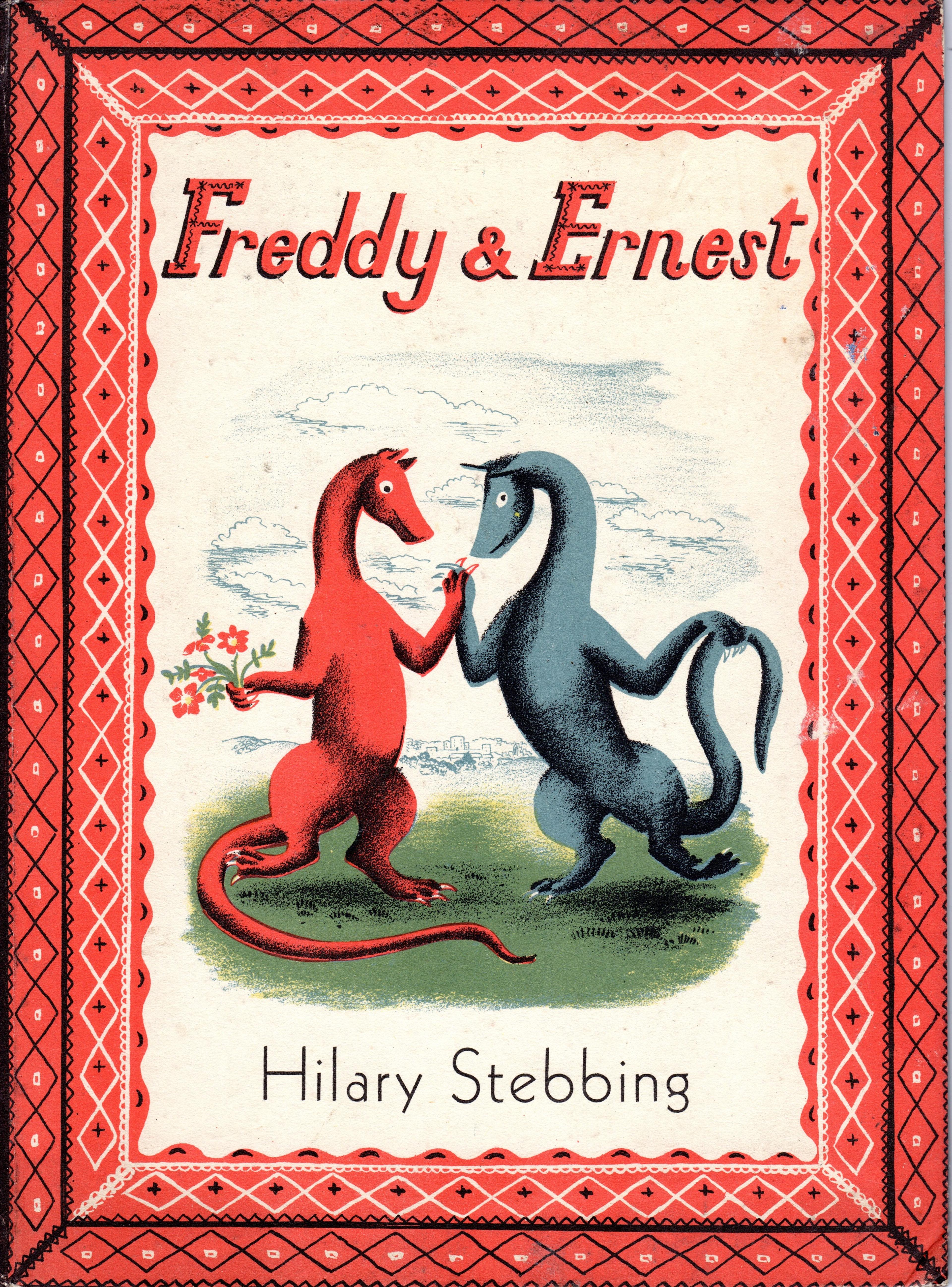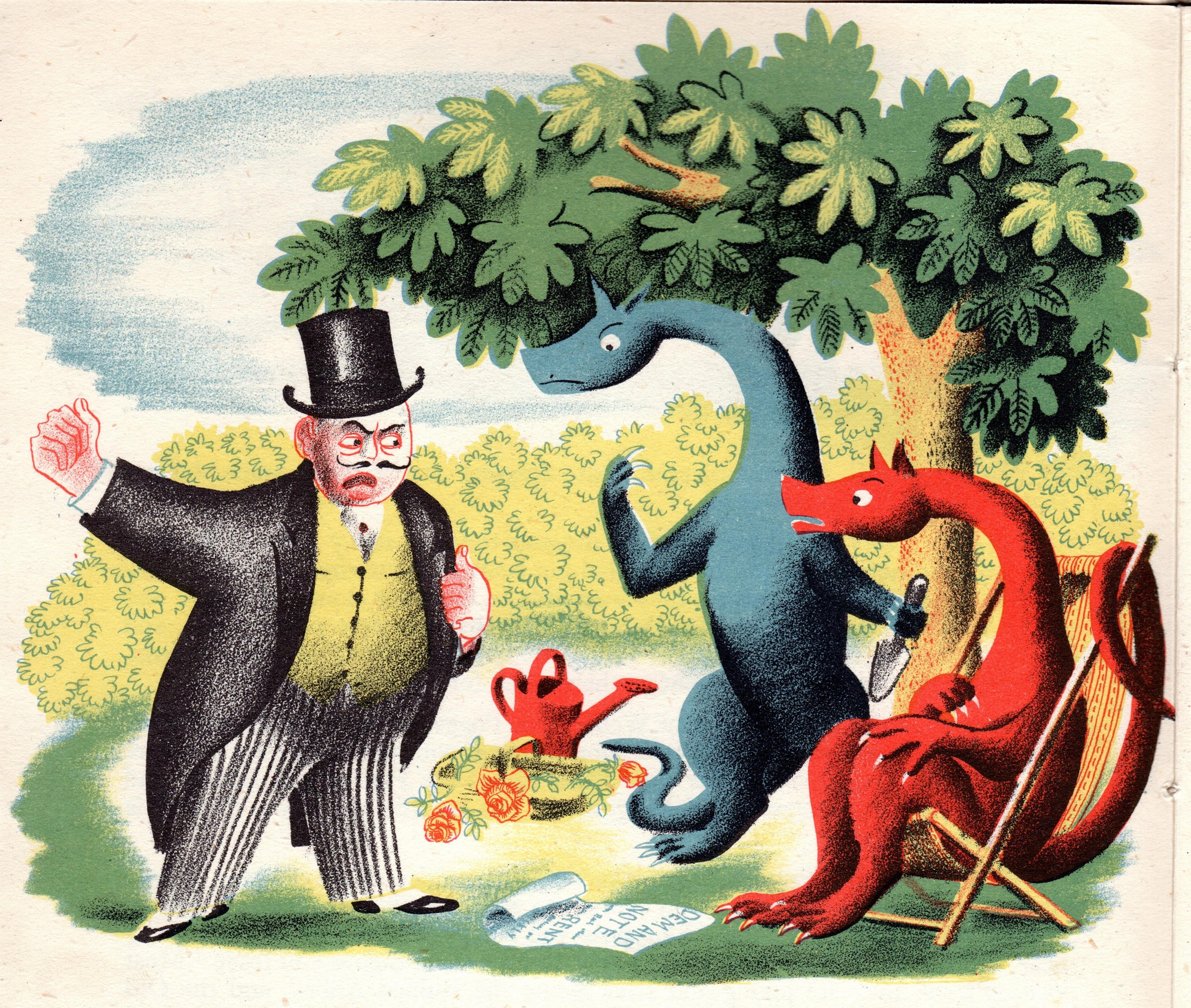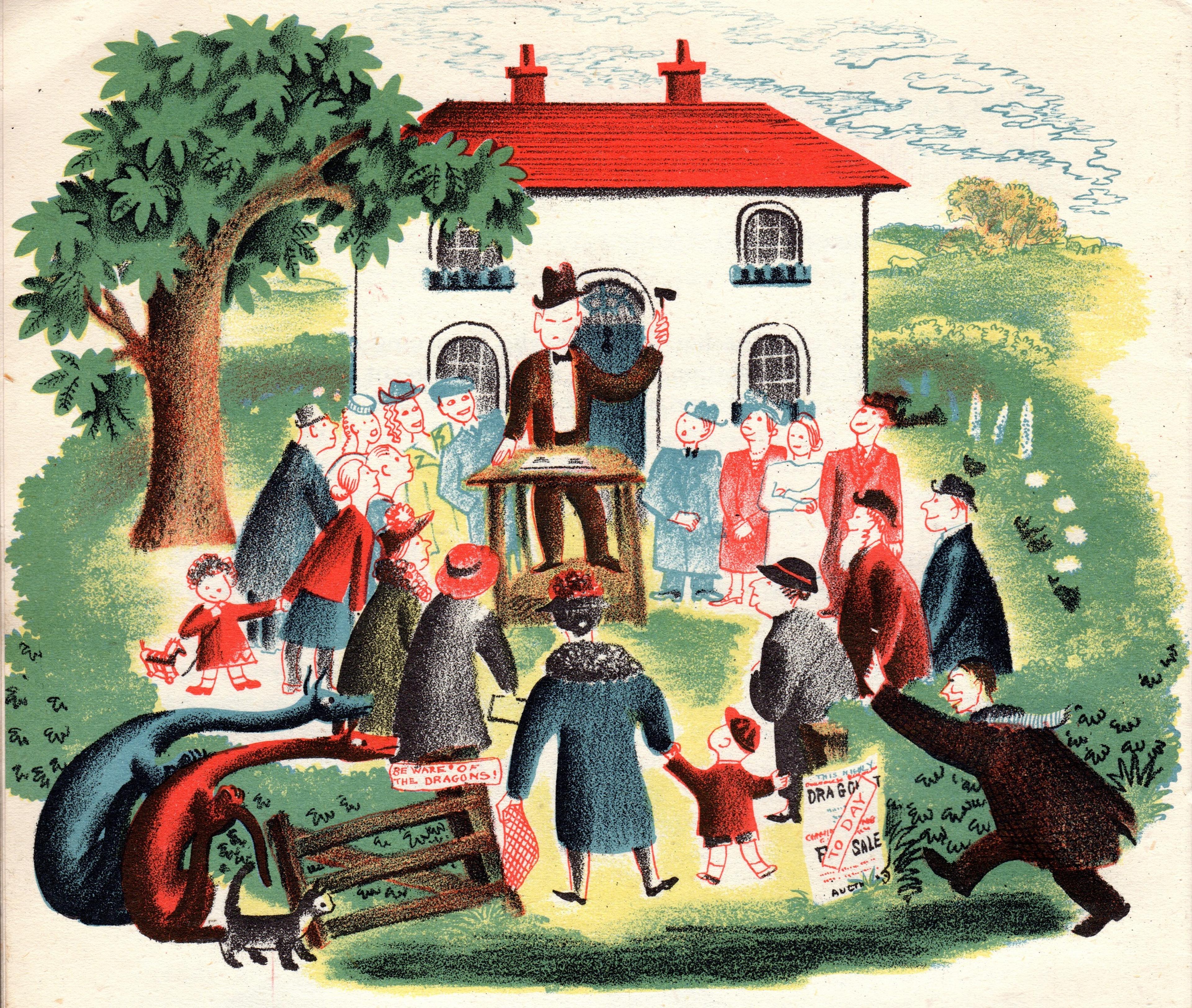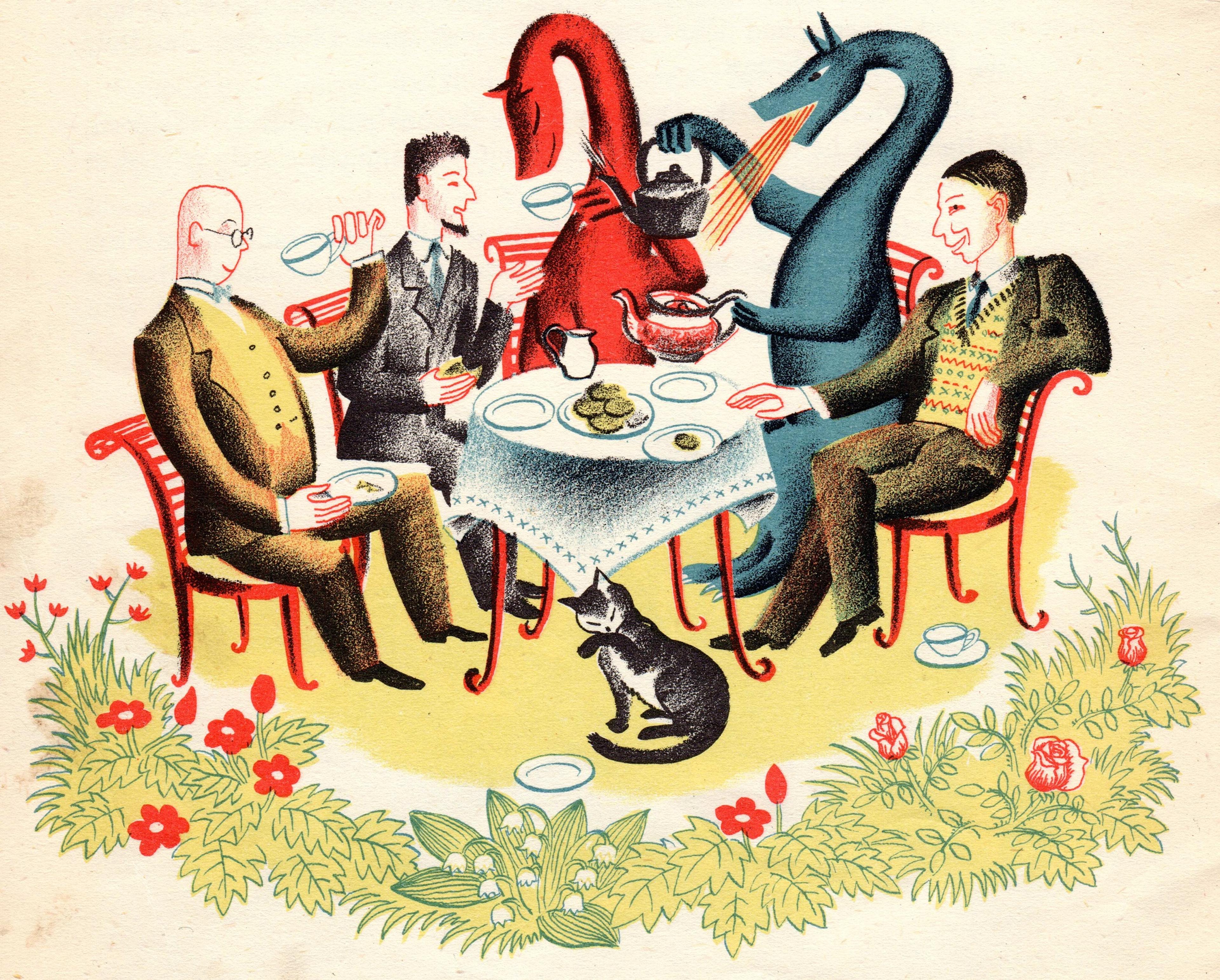Freddy and Ernest: a mid-century LGBTQIA+ picture book
by Josie Spalla, Quentin Blake Centre team
This Pride Month we talked to the Hilary Stebbing Archive about Freddy and Ernest, an early example of an LGBTQIA+ story in children’s literature.
Back in the 1940s, LGBTQIA+ people were criminalised, and LGBTQIA+ characters were rarely seen in picture books.
Hilary Stebbing was a young woman who studied at art schools in London during the 1930s and made friends who were part of the LGBTQIA+ community. One in particular, a painter and costume designer, lived in a caravan in the countryside with his partner, and we think this helped to inspire Hilary’s book Freddy and Ernest, published in 1946 by Transatlantic Arts.

Today, the book seems remarkably political. Freddy and Ernest are two dragons who have lived in the sleepy village of Wellbottom Poggs for centuries, keeping themselves to themselves and left in peace by the local population.
This all changes when a property developer called Mr. Hardsnitch (dressed in top hat and tails for full ‘pantomime villain’ effect) turns up. He has persuaded the Council to put Dragonscott, the pretty thatched cottage where our heroes live, up for sale. He intends to buy it and evict them so he can build a cinema.


Cue comic mayhem as the hapless Freddy and Ernest try to make money; something they have never tried before and aren’t very good at. The drama builds up to an auction of Dragonscott at which a man from the Natural History Museum arrives just in time to place the winning bid.
Freddy and Ernest are able to live happily ever after; so they are probably there to this day…

Find out more about the Hilary Stebbing Archive and their new range of prints being sold to benefit our soon-to-be home, the Quentin Blake Centre for Illustration.